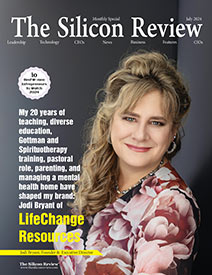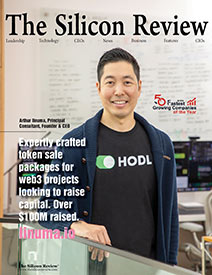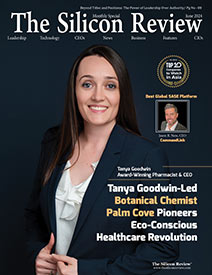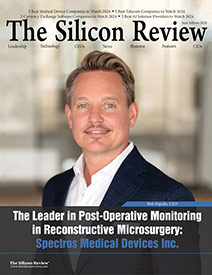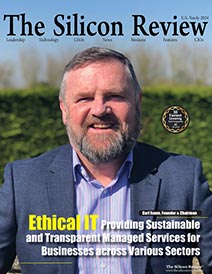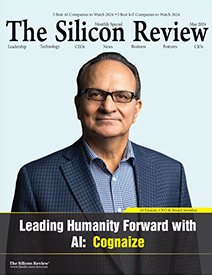50 Most Admired Companies of The Year 2018
An Interview with Prof. Sunyoung Kim, ViroMed Co., Ltd. CEO: ‘We Work Tirelessly to Create Innovative Medicines to Treat the Untreatable’
The Silicon Review
![]()
“It is equally important to mitigate risks and maximize success by developing multiple products and technologies rather than relying on a single product and a single technology.”
For patients, new medicines offer fewer side effects, fewer hospitalizations, improved quality of life, increased productivity, and importantly, extended lives. But developing medicines is a long, complex process.
However, the rapid pace of scientific advances is enabling a greater understanding of diseases at the molecular level.
ViroMed Co., Ltd. is a Korea-based company engaged in the development and manufacture of new biopharmaceuticals and reagents. ViroMed has assembled a diverse, yet technologically and conceptually linked pipeline of new and innovative therapeutics in areas such as cardiovascular and neurological diseases, cancers, and immune disorders; seven clinical trials using innovative DNA and protein based drugs are underway in the US, Korea, and China.
Meanwhile, ViroMed is also running a botanical therapeutics program, leveraging synergies and balancing its programs over the long term.
The company was incorporated in 1996 and is headquartered in Seoul, Korea.
Prof. Sunyoung Kim, ViroMed Co., Ltd. CEO, spoke exclusively to The Silicon Review. Below is an excerpt.
Rewind: Taking Flight
I began gene therapy research in 1993 when retroviral vector was pretty much the only gene delivery vector. The biggest concern at that time was the possibility of producing the replication competent retrovirus (RCR). I was able to develop a vector that can minimize the RCR emergence, and this allowed me to secure funding to found a company. Three years later, we developed another gene therapy program based on naked plasmid DNA, which did not require the use of factors or devices such as liposome or electroporation, and thus could be directly injected into the human body. The basic and common bottleneck of retroviral vector and plasmid DNA vector is how to achieve a high level of gene expression in vivo. The conceptual frames of the two were very similar; we were effectively able to run both gene therapy programs in parallel.
Challenges: Taking the Bull by the Horns
Funding was one of our biggest challenges early on. 20-30 years ago in Korea, there was little and often poor understanding of both venture companies and gene therapy technology. It was difficult to convince potential investors to get on board, and almost none of the major Korean pharmaceutical companies were willing to fund our research.
However, in 1997, we were fortunate enough to license out our technology to a UK-based company, securing $700,000. This was the year when the Asian Financial Crisis started.It was a bad time for the nation, but not so for ViroMed. The FX rate almost doubled and bank interest rate reached almost 30 percent, giving our $700,000 secured capital the clout of close to $1 million. Two years later, we additionally attracted 1.5 million from Korean VCs, but the biggest injection of $6 million came in the year 2000 from a Japanese company, Takara Bio, who later invested another 3 million. With some $15 million in total, we were able to aggressively move forward with our projects. The first project was retroviral gene therapy, which moved more slowly than planned because it was not easy to produce clinical grade retrovirus at GMP facility, but the second project, plasmid DNA, was relatively straightforward. The company went public at the end of 2005 on KOSDAQ, and, with the capital injection from the listing, we initiated clinical trials in the US. Obviously, it is extremely important to meet the right partners at a right timing and secure funding.
Maintaining a Reputation in the Global Market
As CEO I always emphasize to my employees the importance of our work. Once we successfully complete clinical trials and get market approval, we will give birth to the world’s first gene therapy for pain: the first commercialized DNA medicine in history. Just as Genentech did in 1982 when it marketed in the US human insulin produced from bacteria, our work will have great historical significance. Also, we possess platform technology, based on which we can develop different medicines targeting different indications: one of many aspects that stimulate and inspire our employees. Shortly, the fact that we are developing world’s first product serves as an inspiration and a premium that help us keep going with a long-term vision.
Assets: Determination Rises above Mud and Stench
First, we possess historical memory and experience of gene therapy. Gene therapy first came under development efforts in the late 80s. ViroMed was founded in 1996 and has been devoted to gene therapy development for the last 22 years. We have witnessed ups and downs in the field, have accumulated a historical perspective on gene therapy, which helps us a great deal when developing a new product, doing research for new technology, analyzing data, and identifying target indications, and running clinical studies.
Second, one of our biggest strengths is that we move very efficiently and swiftly once a goal is set. I personally think this is part of the Korean spirit. Determination and hard work seem to be Korean cultural tendencies; once an objective is in place, we dedicate ourselves to putting in every effort and work very diligently until our goals are met.
Third, as a small company, we have a very efficient decision-making process. A new project that may go through a 6-12 month or even longer reviewing process at a big corporation is usually decided within a month at our company. Swift decision making has worked in our favor and will do so going forward.
Fourth, we are very cost-effective, particularly for clinical trials. With our somewhat limited resources, we have perfected the balance between being cost-effective and guaranteeing quality performance. We recently learned that we are being 3-5 times more cost-effective than other companies when it comes to conducting clinical trials.
Fifth, we have our own proprietary platform technology. Moreover, plasmid DNA producing facility by nature can be utilized to manufacture other plasmid DNA based medicines, one of the merits of our platform technology.
Sky’s the Limit: Future Arrangements
We are hoping to submit BLA to the US FDA two years from now. It will be the first gene therapy for pain, the first pain medicine with regenerative capabilities, and the first plasmid DNA medicine to be commercialized, marking an important footstep in the history of new drug development. We also hope that, within a year after the submission, the product will enter the market and become a gene therapy product generating top revenue on a global scale, by the year 2025.
Prof. Sunyoung Kim: A Brief Background
Prof. Sunyoung Kim is the Chief Executive Officer of ViroMed Co., Ltd.
Educational Background
Postdoctoral Fellowship, Whitehead Institute, MIT
D.Phil. in Molecular Genetics, University of Oxford
M.S. in Biochemical Engineering, MIT
M.A. in Microbiology and Molecular Genetics, Harvard University
Experience
Professor, Seoul National University
Managing Director, Office of Strategic R&D Planning, Ministry of Knowledge Economy
Director, Institute of Entrepreneurial Biotechnology (BioMAX), Seoul National University
Assistant Professor, Harvard Medical School




